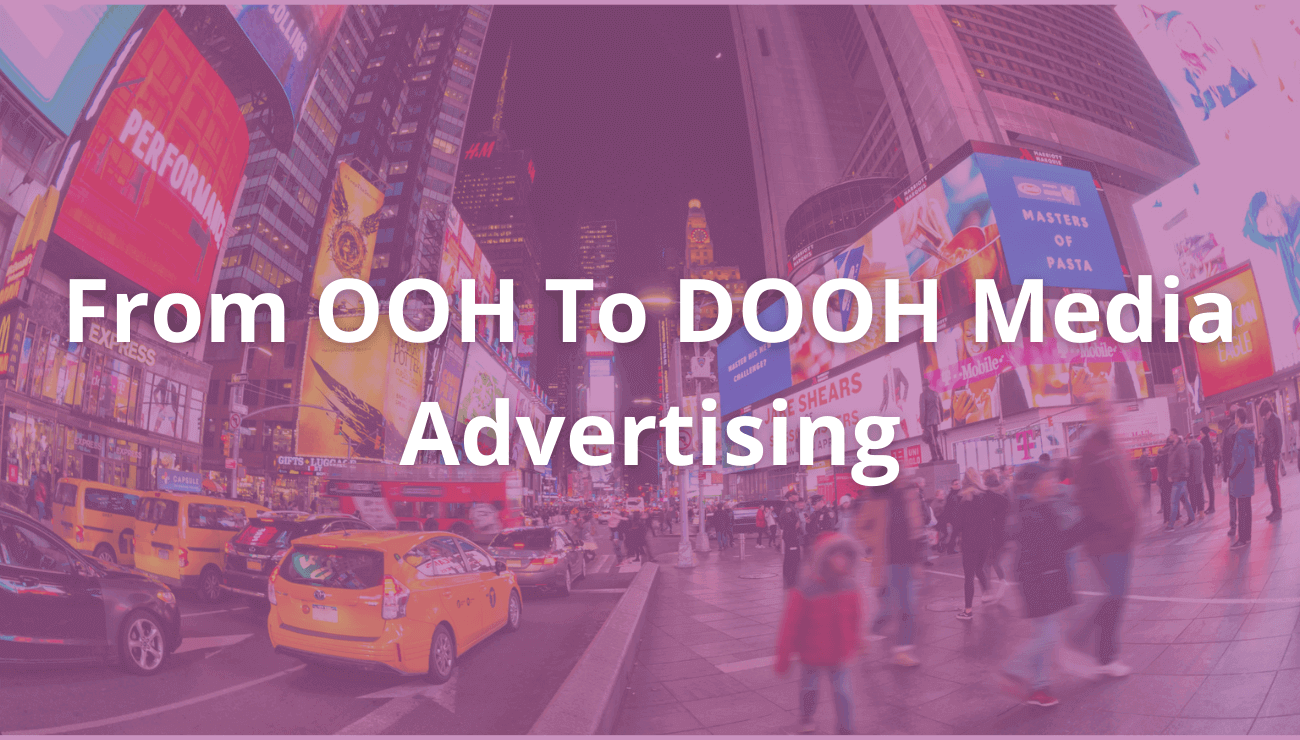From OOH to DOOH Advertising

Have you ever seen digital content on a mini TV screen at a gas station? What about on a digital directory at a mall, or a digital billboard on the side of a bus? These are all examples of digital out-of-home (DOOH) media, and they’re taking over the advertising industry with new innovations seemingly every day.
So what sets DOOH apart, and what considerations do marketing teams need to have when moving into space?
Let’s take a look at what makes messaging, targeting, and purchasing ad inventories is unique in DOOH versus OOH.
DOOH vs. OOH: Messaging
Given the state of mass communications, the world knows about an event moments after it happens, which means public opinion and mood can shift dramatically from one minute to the next.
Take, for example, the recent Planters Super Bowl commercial, in which Mr. Peanut dies and is reborn as “Baby Nut.” Despite Planters’ massive spending on that ad placement, the entire campaign had to be paused due to negative public reactions in the wake of Kobe Bryant’s tragic death. A dead peanut series of static OOH billboards would net a major loss for a company like Planters, having to pay for all ad space to be physically replaced.
Due to the real-time nature of a DOOH campaign, ads can be adjusted quickly in response to events. From small edits to an overall campaign shift, DOOH allows marketers to turn on a dime in an ad environment that demands it.
While this is an extreme example, this same principle can be applied to other use cases, like allowing brands to react to changes in the weather to ensure ads are relevant and timely. For example, a home improvement store with a gardening DOOH campaign could instantly change it over to shovels with a late-season blizzard hit.
DOOH vs. OOH: Targeting
Digitally-enabled OOH media uses location-based data to understand the audiences that are within view of the ad. Anytime consumers download an app that asks for location data, for example, those who opt-in are agreeing to share their location information with data providers. Then, advertisers can use that data to understand the traffic patterns of those consumers and where they’re spending time.
This is also how viewership for OOH ads is measured, although there’s no guarantee that someone within a certain location actually viewed the ad in question. This location data can then be used to assess the effectiveness of the ad, especially if your end goal is to drive traffic to a certain location like a storefront.
Edge1 Outdoor Media Management Software has the capability to correlate this location data with online audiences using mobile IDs that can be converted into IP addresses. Retargeting consumers is also an option, as geofencing allows advertisers to target people within a specific radius and serve them additional ad content.
DOOH vs. OOH: Purchasing
Along with increased agility and accuracy in messaging and targeting, DOOH purchasing is far more compatible with digital marketing operations than traditional OOH.
Because of its digital nature, any digital team can easily fold DOOH into their overall digital strategy, and this is where the real merging of the physical and digital happens.
Programmatic DOOH is the concept that enables media buyers to develop a set of criteria for the intended audience of a given ad, such as time of day or weather conditions, for example. When those criteria are met, the purchase transaction is executed automatically and the ad is displayed on the screen.
These purchasing decisions are powered and analyzed by new methods of measurement that are far more accurate than before. Traditionally, OOH was not part of the omnichannel conversation because of the inability to measure accurate results against foot traffic or sales lift.
Conclusion
DOOH is shifting the advertising landscape, and many feel that it’s changing for the better. In the coming months and years, we’ll continue to see brands really experiment to understand what they’re capable of in this new space. Consumers will also reap the rewards, interacting with their surroundings in ways that are designed to inform and entertain simultaneously. Time will tell where exactly the industry will take us, but one thing is for sure: DOOH isn’t going anywhere.
To know more
- Email
- Phone+91 (011) 22412700
Subscribe to our newsletter
We understand you’re busy. But you still want to be informed. Join our community of more than 60,000 subscribers to stay up to date with the latest out-of-home media advertising trends and happenings in Edge1.
